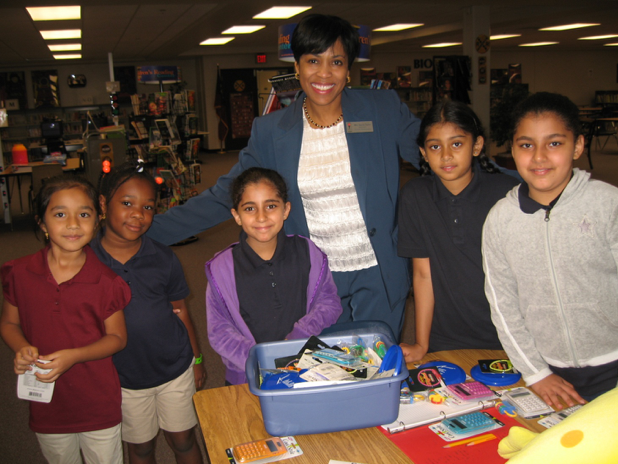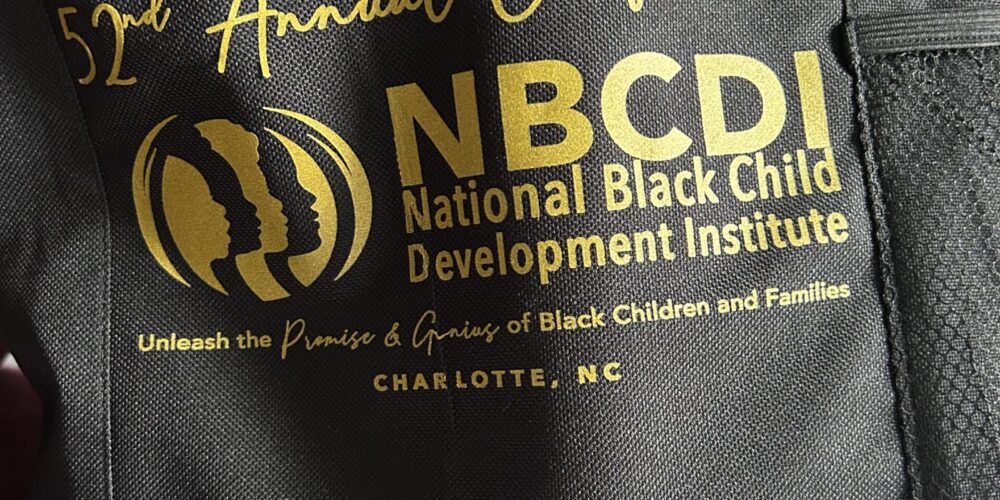A Reality Teachers Must Face in the Classroom: Multiculturalism is Staring at You!
Wandy W. Taylor, EdD
A Reality Teachers Must Face in the Classroom:
Multiculturalism is Staring at You!
The complexion of the faces of students that sit in classrooms across America has undergone a dramatic change. In 1996, data provided by the Pew Research Center indicated that over 63 percent of the 46.1 million students in our nation’s public schools were white. Today, white students account for just 49.5 percent of the 50 million students enrolled. While the nation’s school-aged children are becoming more diverse, the teaching corps is not. Of the 3.3 million teachers in the U.S. public school system, roughly 82 percent are white. This represents little change since 1990 when 87 percent of teachers were white (Chen, 2019).
The Reality of a Culture Gap
These figures indicate that a real culture gap exists in our nation’s public schools. In quantitative terms, that gap is roughly 31.5 percentage points; that is, the percent of white teachers (82) minus the percent of nonwhite students (50.5) equals 31.5 percentage points. This culture gap continues to adversely impact student engagement, which is the essence of learning in the classroom (Fulton, 2019). When students are engaged with their teacher, they are learning. When they are not engaged, they are not learning.
When barriers are created between teachers and their students, the various dimensions of student engagement are negatively impacted. Students can become emotionally disengaged from their teachers; they become less motivated to participate in school activities; and they become detached from the learning process. In other words, when students become disengaged with their teacher—learning is suppressed.
Perhaps the greatest suppressor of teaching and learning occurs when there is a cultural gap between teachers and their students. This gap is stimulated by implicit biases related to race, language, and negative stereotypes (Taylor, 2018). While many teachers are able to overcome some of the cultural barriers in their classroom through training, hard work, and creativity, there is a harsh reality—most teachers find it overwhelming to make their classrooms places where differences become strengths. Many of these teachers do not recognize the creative ways that students express themselves. They are not able to see students’ perspectives; they do not nurture and support competence in both home and school cultures; and these teachers do not seek out ways to make their instruction compatible with the cultural learning styles of minority students.
The Reality of a Challenge
The challenge related to improving student engagement in the ever-increasing culturally and racially diverse classrooms in our nation’s public schools is threefold. That challenge involves moving teachers (1) out of their state of denial, (2) away from their implicit biases, and (3) into a mindset that they can become more effective and culturally competent. If the key to bridging the culture gap rests with having effective, culturally competent teachers in classrooms, then where do we find them? Are they born or are they made?
Fortunately, teachers can be taught the skills they will need to be successful in multicultural classrooms. In response to this growing need, public school districts across the nation have begun to use ongoing evidence-based professional development as a vehicle to make aspiring and practicing teachers better prepared to reach their culturally diverse students (Taylor & Taylor, 2021). When done correctly, professional development activities can help teachers move out of denial, confront their implicit biases, and develop the skills they will need to better engage the students in their multicultural classrooms. But the reality remains—there will be challenges!
The Reality of a Tale of Two Schools
During my years as a principal in Gwinnett County, Georgia, I witnessed many teachers who were in denial of their own perceptions. My elementary school was highly diverse with the following student demographics: 67 percent Hispanic, 13 percent black, 12 percent Asian, six percent white, and two percent “other” ethnicity. Eighty-nine percent of those students received a free or reduced price for meals, which is an indication that the vast majority of them came from low-income households.
A neighboring elementary school, which is located in an affluent community less than five miles from my school, had a student population that was a lot less diverse. Roughly 44 percent of the students in that school were white, 25 percent black, 16 percent Asian, 11 percent Hispanic, and four percent “other” ethnicity. Only 30 percent of those students received a free or reduced price for meals, which is an indication that the majority of students came from middle to upper-income households.
Dr. Sharon Smith, a master teacher at the more affluent school, contacted me during the spring of 2015 after reading a news article in the Gwinnett Daily Post about recommendations I had submitted to the school board on behalf of a 25-person committee that consisted of principals and district-level administrators. One of the recommendations involved having all teachers and staff in the school district undergo training in cultural competence. Although the school board rejected all of the recommendations (Farner, 2015), Dr. Smith, who was the district’s Teacher of the Year at that time, recognized the urgent need for cultural competence, especially since her school was undergoing a dramatic shift in their demographics.
She approached me with a proposal to have the teachers in our respective schools participate in cultural competence training. Dr. Smith, who is of Cuban decent, felt that an emerging culture gap was beginning to impede the ability of her colleagues to engage the students of color in their classrooms. I agreed to confer with her principal to discuss the possibility of having a joint-training session.
After our discussion, my fellow principal and I agreed to hire a professional consultant to provide a workshop in cultural competence for our respective faculties. While the session was fruitful, my principal colleague in the affluent school conceded the reality that most of her teachers were in denial, and they did not see the value in cultural competence. The consultant and I made the same observation.
Apparently, their faculty felt comfortable knowing that they were able to engage the majority of the students; namely, the ones that looked like them―white middle-class Americans. Many of them commented that “we don’t see color” and “we treat all kids the same.” Others were simply sympathetic to some of their students’ less-fortunate conditions, and they didn’t want to push them too hard because “those students already have so much to deal with” – not realizing they were simply lowering the expectations. But perhaps the main reason for their apparent lack of interest in cultural competence stemmed from the actions (or inactions) of the all-white school board. Since they had rejected the recommendations made to them the previous month for districtwide implementation of cultural competence training, many teachers throughout the district simply followed their lead. If the school board did not deem it a priority, neither did they. Leadership matters.
The Reality that Leadership Matters
To engage students effectively in the learning process, teachers must know their students and their academic abilities individually. They cannot rely on implicit biases that paint distorted pictures of students based on racial or ethnic stereotypes. Many teachers, for example, admire the perceived academic prowess and motivation of Asian American students. But they fail to recognize how even a so-called “positive” stereotype isn’t positive if it pressures some students into molds that are not built for them individually. In other words, there is an inherent danger involved in typecasting all Asian American students (or any other group) as possessing an all-inclusive trait or characteristic.
We should never lose sight of the fact, however, that educating our children is a shared responsibility. While teachers are performing inside the classroom, leaders outside the classroom must support their efforts. Too often, when mishaps occur in the academic arena, teachers bear too much of the blame.
In reality, a principal is the primary leader in a school building and sets the tone for teaching and learning. Effective principals establish high instructional standards with high expectations that every student will learn at high levels, irrespective of race, family’s income, disability or anything else. As the instructional leader of a school, effective principals provide ongoing professional development opportunities to equip teachers with the skills they will need to engage the kaleidoscope of faces in their classrooms. Foremost among those skills is the acquisition of culturally responsive teaching strategies to facilitate student engagement. Yes, in reality—leadership matters.
The Reality for Public Education in America
Perhaps the strongest dose of reality for America is that our ranking in public education is steadily falling behind the rest of the world (Barshay, 2019). The Program for International Student Assessment (PISA) is the tool used to measure students’ academic skills in about 80 industrialized countries. The PISA is coordinated by the Organization for Economic Cooperation and Development (OECD), an intergovernmental organization of industrialized countries. Testing is conducted in the United States by the Nation Center for Education Statistics. The test is administered every three years to 15-year-old students to measure their performance in reading, math, science, and problem solving.
The United States, for the most part, was disappointed with the results of the 2015 international assessment. As in previous years, the country fell below the OECD average in Math. The U.S. ranked 38th out of 71 countries in Math and 24th in Science. This caught the attention of educators across the country and caused many people to question the quality of public education in America. The hopes and expectations were that our 15-year-olds would perform much better on the PISA in 2018.
After three years of angst and anticipation, the 2018 rankings on the PISA were released in December 2019. The narrative was essentially the same as in previous years. The U.S. now ranks 37th out of 79 countries that participated in the assessment.
This is the harsh reality educators in America must face: improvements are needed in many of our public schools. A culture gap between many teachers and their students has created barriers with classroom engagement. This lack of engagement has perpetuated a “national” achievement gap between students of color (primarily African Americans and Hispanics) and their white peers. Moreover, this problem with teacher-student engagement has promulgated another sobering reality; namely—an “international” achievement gap between students in the United States and many of their counterparts in other industrialized countries.
Clearly, as America’s schools have become more racially and culturally diverse, it is incumbent upon teachers to engage their diverse student populations more effectively. Fortunately, effective teachers can be molded through relevant professional development. Until and unless school leaders recognize the urgent need to infuse culturally responsive teaching strategies into their pedagogy, teachers will continue to face this reality¾multiculturalism is staring at you!
References
Barshay, J. (2019, December 16). What 2018 PISA international rankings tell us about U.S. schools. The Hechinger Report. Retrieved from https://hechingerreport.org/what-2018-pisa-international-rankings-tell-us-about-u-s-schools/
Chen, C. (2019, October 14). White Students are now the Minority in U.S. Public schools. Public School Review. Retrieved from https://www.publicschoolreview.com/blog/white-students-are-now-the-minority-in-u-s-public-schools
Farner, K. (2015, April 15). Gwinnett County Schools seeks to develop cultural competency, inclusiveness. The Gwinnett Daily Post. Retrieved from https://www.gwinnettdailypost.com/archive/gwinnett-county-schools-seeks-to-develop-cultural-competency-inclusiveness/article_219b9478-262f-5620-b78a-f2aac73d0cf6.html
Fulton, J. (2019). Three Kinds of Engagement. Retrieved from https://www.classcraft.com/blog/features/evidence-of-student-engagement/
Taylor, J. (2018). From Unequal to Unwanted: Reforms Needed to Improve K-12 Public and Higher Education in America (pp.137-140). Indianapolis, IN. Dog Ear Publishing.
Taylor, J. & Taylor W. (2021). The Imperfect Storm: Racism and a Pandemic Collide in America; How It Impacted Public Education and How to Fix It (pp. 51-61). Bloomington, IN. Archway Publishing.
Bio
Dr. Wandy Taylor has over 23 years of experience in public education, having served as a counselor, assistant principal, director, and principal. She has used her unpublished dissertation—Using Culturally Responsive Teaching Strategies to Impact Teachers’ Perception of Classroom Engagement in a Culturally Diverse Title I Elementary School: An Action Research Study—as the focal point of numerous workshops for teachers. Wandy is the CEO of Taylor & Taylor Education Consultants, a company she co-owns with her husband.



